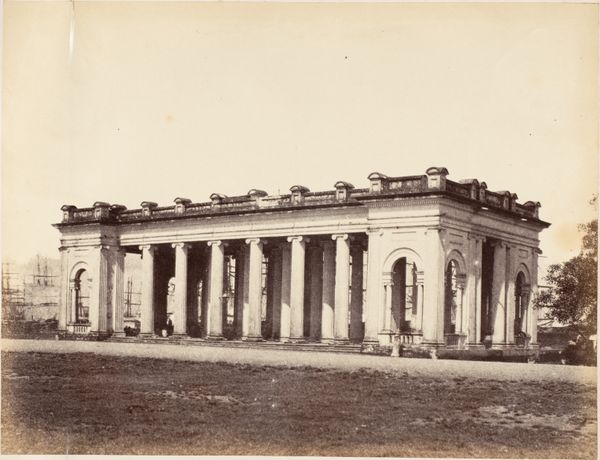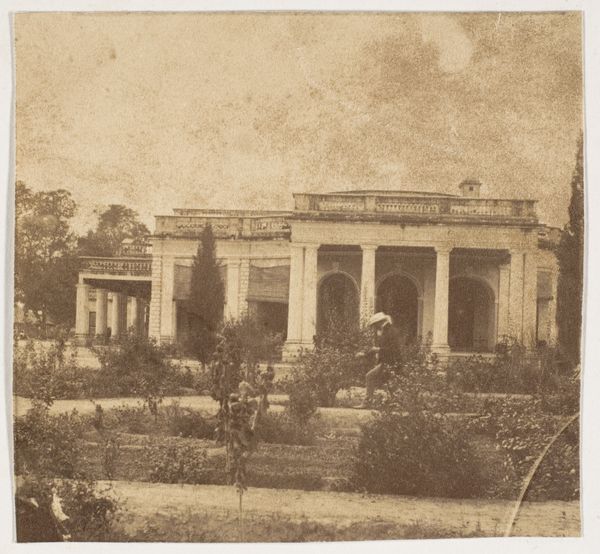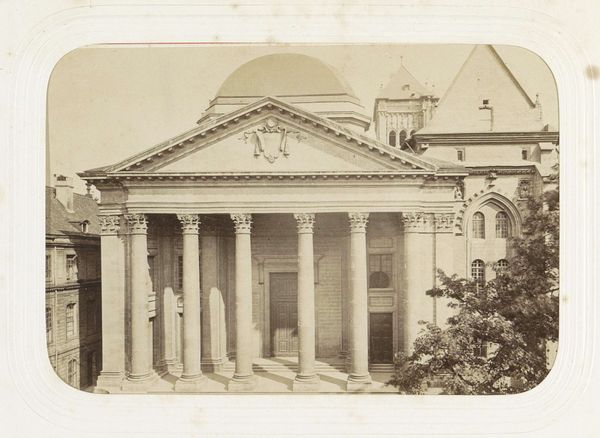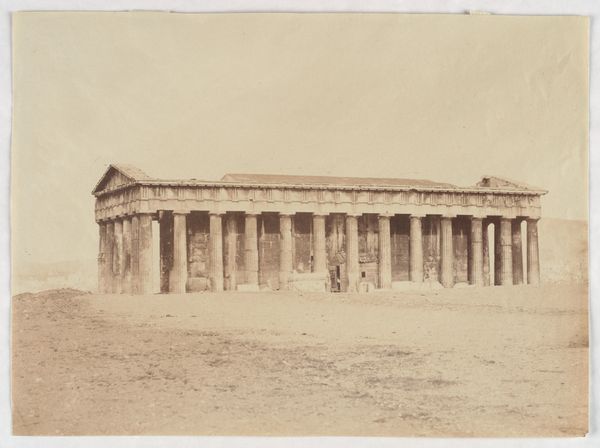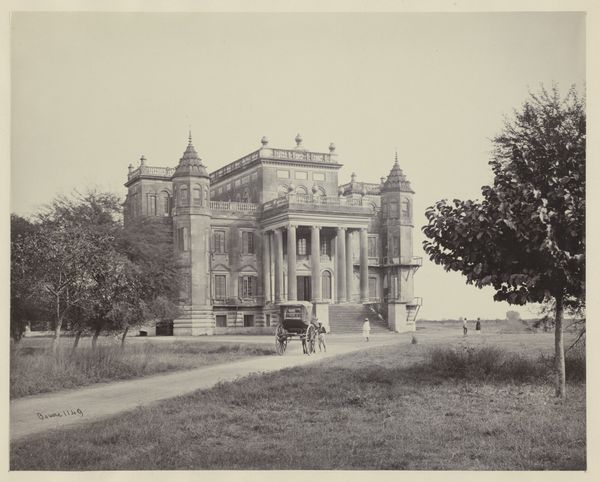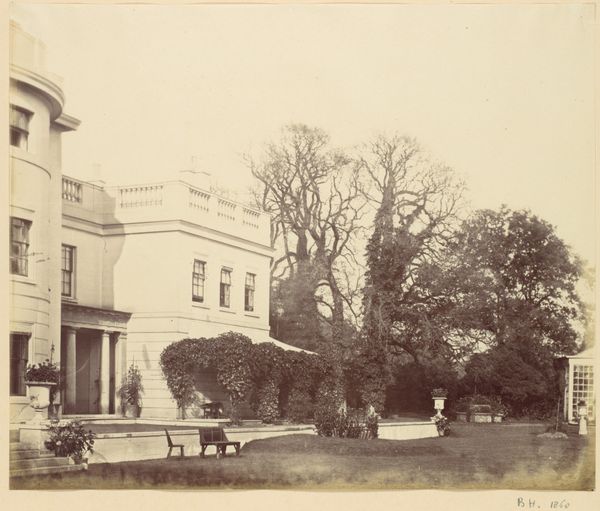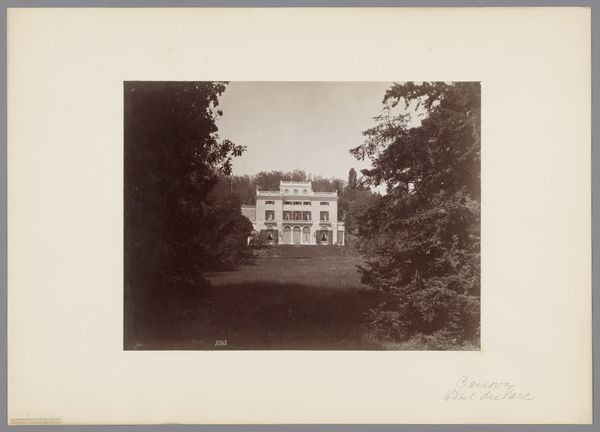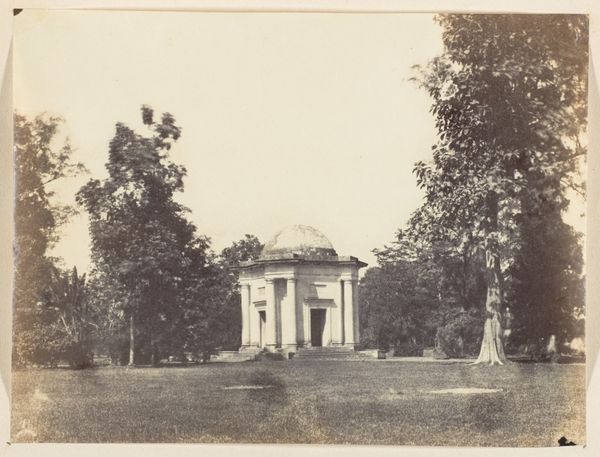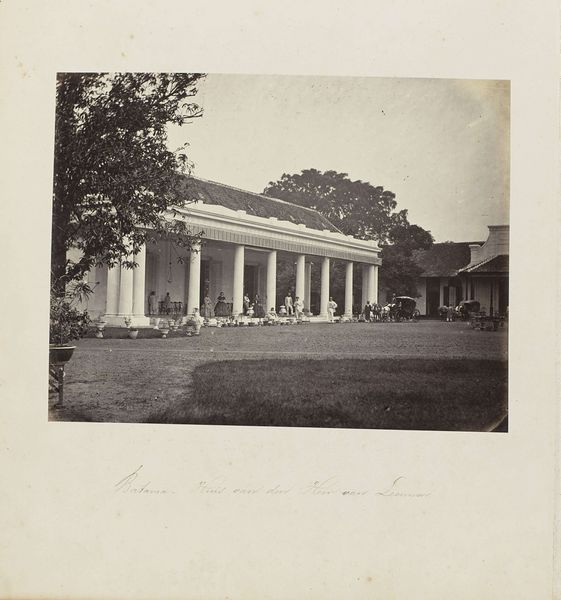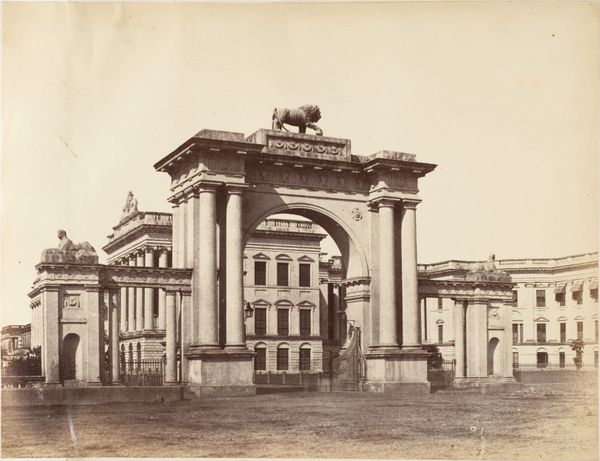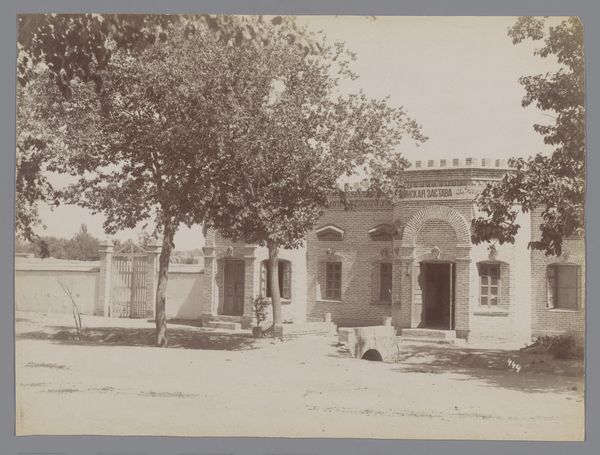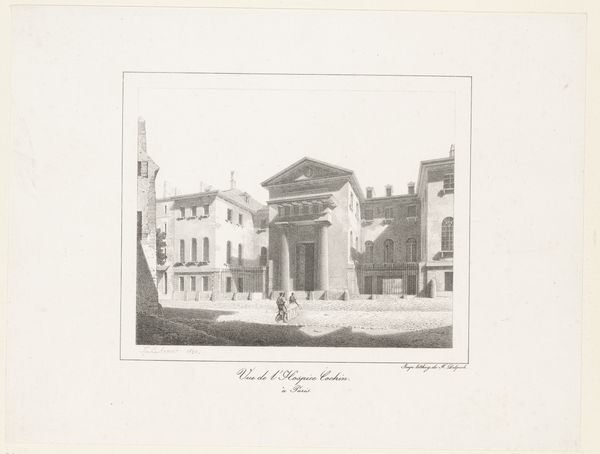
daguerreotype, photography, architecture
#
landscape
#
daguerreotype
#
classical-realism
#
photography
#
architecture
#
realism
Dimensions: 17.4 x 22.0 cm. (6 7/8 x 8 11/16 in.)
Copyright: Public Domain
Curator: This is "Willey," a daguerreotype by Alfred Capel Cure, dating from the 1850s or 60s. It resides here at the Met. Editor: My immediate reaction is that of stoic monumentality; it’s somber, a grand edifice rendered in meticulous detail. It also feels incredibly… static. Curator: Well, consider the context: daguerreotypes required long exposure times, necessitating still subjects. The rise of photography democratized portraiture but also architectural documentation. Country estates were symbols of wealth and power – photographing them was another way to display status, albeit for a different, perhaps wider, audience than a painted portrait. Editor: Yes, but doesn’t that focus solely on consumption? I'm curious about the technical process. The almost metallic sheen of the daguerreotype – it isn’t like modern photographic prints. Think of the labor involved, the precision, the artisanal element in what we consider an early form of mass media. Each one had to be handled carefully, and polished. Curator: Absolutely, the material aspect is key! And let's think about presentation. This isn’t a massive print dominating a gallery wall. Daguerreotypes were small, intimate objects, often displayed in cases. The viewer's relationship was far more personal. In thinking of audiences: country houses historically were both spaces of living, places to raise a family, but they were also stages. This is the stage set – a place for gathering elites. Editor: A constructed world shown through a highly constructed image, so you’re drawing a comparison to classical portraits of patrons, then? Yet here the patron is implied through the building, through a portrait of their labor. Curator: Precisely. We get a sense of that performance from the very sharp edges of the photograph itself. The clarity offered an assurance of a certain lifestyle to wider, middle-class audiences. And as photographs grew in accessibility through different printing and publishing means, we find these structures used more frequently to make aspirational statements about lifestyle for new audiences. Editor: Food for thought indeed! It certainly encourages me to look at seemingly simple photographs in a more profound light, examining their material existence. Curator: Agreed! Context is crucial. By exploring the socio-political currents and the physical properties of the art, we arrive at a richer understanding of both the object and its time.
Comments
No comments
Be the first to comment and join the conversation on the ultimate creative platform.
